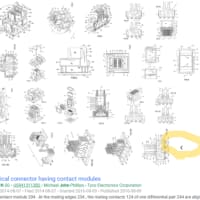~するよう制御する(目的語が無い場合)
perform (implement, effect, provide) control ("a control"?) such (so) that(でいいのか?)
US2016059855
"[0004] Driver assistance systems such as “Adaptive Cruise Control” increase driver comfort and safety. They are currently especially used for carrying out longitudinal control of a host vehicle, for example with respect to a velocity specified by the driver and ranging to other traffic objects such as other land, air or sea vehicles (cars, motorbikes, bikes, trucks, etc.), pedestrians, . . . . The host vehicle is provided with (“hosts”) a sensor physically sensing the host vehicle's environment and a computing unit processing an output signal of the at least one sensor. Lateral control of the host vehicle in combination with the longitudinal control is of particular importance for avoiding collisions with other traffic participants. Avoiding collisions is one of the central aims of future ADAS. When emergency situations such as a close-to-crash situation or an exceptional situation such as a crash directly in front of the own vehicle arise, drivers appreciate the assistance of ADAS components such as a collision-mitigation-and-brake system (CMBS). A CMBS system that controls autonomously decelerating (*controlの目的語)the host vehicle to a stand-still (*減速を制御して停止させる)or evading other traffic objects by steering commands to avoid or mitigate collisions of the host vehicle with other traffic objects."
“アダプティブ・クルーズ・コントロール(Adaptive Cruise Control)”のような運転者支援システムは、運転者の快適性と安全性とを増進する。これらは、現在では特に、例えば運転者が指定した速度に関して、ホスト車両の縦方向制御(長手方向制御)(longitudinal control)を実行するのに用いられ、他の陸上用、航空用、又は海洋用の乗り物又は車両(自動車、バイク、トラック等々)、歩行者...のような他の交通物体の範囲にまで及んで用いられている。ホスト車両は、当該ホスト車両の環境を物理的に検知するセンサと、少なくとも一つの当該センサの出力信号を処理する演算ユニット(computing unit)と、を備える(「ホスト(host)」する)。縦方向制御と組み合わせてホスト車両の横方向制御(lateral control)を行うことは、他の交通参加者との衝突を回避する上で特に重要である。衝突回避は、将来のADASの中心的な目標の一つである。衝突寸前の状況のような緊急状況や自車両直前での衝突などの例外的状況が発生した場合、運転者は、追突被害軽減ブレーキ(CMBS)などのADASコンポーネントの支援の便利さを実感する。CMBSシステムは、ホスト車両と他の交通物体との衝突を回避又は緩和するべく、自律的にホスト車両を減速させて静止させるか、又は操舵命令により自律的に他の物体を回避するよう制御を行う。
EP2928694
"[0025] In block S514, movement of a detector carriage including a plurality of drop detectors of a drop detector array is controlled with respect to the printhead device by a control module to align each one of the drop detectors with the respective firing paths corresponding to the respective nozzles at a predetermined time. In some examples, controlling movement of a detector carriage may also include controlling movement (*移動を制御する)of the detector carriage at a constant speed in an orthogonal direction with respect to the firing paths corresponding to the nozzles and in synchronization with the fluid drops ejected from the nozzles."
ブロックS514で、小滴検出器アレイの複数の小滴検出器を含む検出器キャリッジの運動がプリントヘッド装置に対して制御モジュールにより制御されて、該小滴検出器の各々が所定のタイミングでそれぞれのノズルに対応するそれぞれの発射経路と位置合わせされる。実施形態によっては、検出器キャリッジの運動の制御はまた、ノズルから流体小滴が吐出されるのと同期して該ノズルに対応する発射経路に対して直交する方向に一定速度で検出器キャリッジを移動させるよう制御を行うことを含む。
WO2014059479
"To give an example in which the physical parameter being used to determine an amount of air passing through the system is pressure or temperature, consider a system in which the air sample (or a known proportion of the air sample volume) is captured in a first chamber of a closed system, the actual volume Vi (or pressure if volume if fixed) of this amount of air may never be known. However if the temperature Ti and pressure P (or volume if pressure is fixed) of the captured sample is measured. The captured sample is then moved to a second camber of known, volume V 2and the new temperature T 2and pressure P 2are related to the initial volume by Boyle's law. By controlling one (*一方を制御する)the either pressure or temperature to be held constant (*一定となるように)during the transfer of the sample (or sample portion) to the second chamber a temperature or pressure can be used as an amount that relates to volume of sample air that has passed through the system."
システムを通過する空気の量を決定するために用いられる物理的パラメータが圧力または温度である例を挙げるために、空気試料(またはその一部(既知の割合))が閉鎖系の第1チャンバ内で捕捉されるシステムを考える。この空気の実際の体積V1(または体積一定の場合には圧力)を知ることはできない。ただし、捕捉試料の温度T1と圧力P1(または圧力一定の場合には体積)が測定される。次に、この捕捉試料を体積V2が既知の第2のチャンバに移動させ、ボイルの法則を用いて温度T2と圧力P2を最初の体積に関連させる。試料(または試料の一部)が第2チャンバに移動する間、圧力または温度が一定に保たれるよう制御を行うことにより、システムを通過する試料空気の体積に関連する量として、温度または圧力を用いることができる。
US10186899
"The control system thereby controls the energy flow between one or more connected external voltage systems (local power supply system and/or non-local power supply system) and the flywheel storage units of the energy storage module. The control system thereby controls the DC voltage of the intermediate circuit substantially constantly to a nominal DC voltage, for example 750 V. The expression “substantially constantly” means that the DC voltage can indeed fluctuate temporarily within permissible tolerances, for example ±5 V, wherein the control system always controls such that (*自動詞)the actually present DC voltage of the intermediate circuit corresponds to the nominal DC voltage in the ideal case. However, the tolerance range can also be larger than the above-specified values. The control system handles this control in that it uses the external voltage grid or the external voltage grids, depending on the power flow direction, as inexhaustible current source (charging the flywheel storage units with energy) or as drain for the excess energy in the DC voltage intermediate circuit, respectively. For this purpose, suitable control systems comprise one or more power supply inverters or step-up/step-down converters."
従って、制御システムは接続された1つ以上の外部電圧システム(局地的電力系統および/または非局地的電力系統)と、エネルギー貯蔵モジュールのフライホイール貯蔵部との間のエネルギー流を制御する。そして制御システムは中間回路の直流電圧がたとえば750Vの実質的一定の公称直流電圧になるよう制御する。「実質的一定」とは、直流電圧に、たとえば±5Vの妥当な誤差が許容されているということである。従って、理想的には、制御システムは中間回路における現状の実際の直流電圧が常に公称直流電圧に対応するよう制御を行う。許容誤差範囲は上記値よりも大きくてもよい。制御システムは、電力流方向に応じて、1つ以上の外部電圧系統を再利用可能な電流源(フライホイール貯蔵部をエネルギーで充電)または直流電圧中間回路の余剰エネルギードレインとして使用する制御を行う。このため、適切な制御システムは1つ以上の電源インバータまたは昇圧/降圧コンバータを有する。
US9849475
"Primary heater control modules 114a and 114b relay power received from heater power circuit H through contactor 112 to primary heaters 102a and 102b in discrete pulses specified by power commands PCa and PCb, respectively. Logic controller 120 commands more frequent pulses to achieve or maintain higher temperatures, or when differences between commanded temperatures CTa or CTb and actual fluid temperatures ATa and ATb are large. Correspondingly, logic controller 120 commands less frequent pulses where commanded temperatures CTa or CTb are low, or where actual fluid temperatures are close to commanded values. Intervals of commanded pulses may range from multiple pulses each second to only few pulses per minute, or even several minutes between pulses. A- and B-side power commands PCa and PCb need not be the same."
ヒータ制御モジュール114aは、ヒータ電力用回路Hから開閉器112を経由して受け取った電力を、電力指示信号PCaによって特定される分離した複数パルスの形で、主ヒータ102aに中継し、ヒータ制御モジュール114bは、ヒータ電力用回路Hから開閉器112を経由して受け取った電力を、電力指示信号PCbによって特定される分離した複数パルスの形で、主ヒータ102bに中継する。論理制御装置120は、流体温度をより高温に上昇または維持するほど、パルスの間隔を短縮し、指示温度CTaと実際の流体温度ATbとの差が増大するほど、または指示温度CTbと実際の流体温度ATbとの差が増大するほど、パルスの間隔を短縮する。従って、論理制御装置120は、指示温度CTaもしくは指示温度CTbが低温となるほど、または実際の流体温度が指示温度に近付くほど、パルスの発生頻度が低下するように制御を行う。このようなパルスの周期は、秒ごとに複数のパルスとなるような周期から、分ごとに数個のパルスしか含まれないような周期、または数分の周期までの間で変化させるようにしてもよい。A側の電力指示信号PCaとB側の電力指示信号PCbとは、同一である必要はない。
US10228167
"An embodiment according to the invention also provides a means for achieving warming of the heat exchanger that requires no external equipment and that does not require access to the sealed refrigeration system. For instance, an embodiment according to the invention can achieve rapid warming of the heat exchanger array using only internal valves of the refrigeration system. In addition, the system includes instrumentation and controls to (*自動詞)determine when the heat exchangers have been warmed and to terminate the warming process."
本発明による実施形態はまた、外部機器を必要とせず、かつ密封された冷凍システムへのアクセスも必要としない、熱交換器を暖める手段を提供する。例えば、本発明による実施形態は、冷凍システムの内部バルブのみを用いて、熱交換器アレイを急速に暖めることができる。加えて、システムには、計器を使用することも含まれていて、熱交換器がいつ暖められるかを判断したり、暖めプロセスを停止したりするように制御を行う。
EP1197040
"Working together with IP is TCP which provides controls to ensure that a reliable data stream is sent and delivered. At the sending end, TCP puts a byte count header on information that will be delivered to the IP protocol layer and encapsulates it as part of the packet. The receiving end, when it gets packets is responsible for resequencing the packets and ensuring its accuracy. If all of the IP flow is not received correctly, the byte count acknowledgment or nonacknowledgment message can be sent back to the sending end, prompting the sending end to resend the bytes necessary to fill in the remaining portions of the packet flow. TCP buffers additional packets until after resending the nonacknowledged packet."
IPとともに、TCPは信頼性のあるデータストリームの送信および伝送を確保するように制御を行う。送信端で、TCPはIPプロトコル層に送信する情報にバイトカウントヘッダを付け、パケットの一部としてカプセル化する。受信端では、パケットを受信すると、パケットを並び替え、正確さを確保する。すべてのIPフローが正しく受信されていない場合、バイトカウント肯定応答または否定応答が送信端に返送され、パケットフローの残りの部分を充足するために必要なバイトを再送するように送信端を促す。TCPはさらに、否定応答されたパケットが再送されるまで追加のパケットをバッファする。
US8452459
"A system and method to facilitate heat recovery in a process control system is disclosed with a specific premise of maximizing heat recovery in a heat exchanger network. In particular, only the outlet temperature need be collected from each heat exchanger path. The system and method accomplishes the maximization through load allocation, known as Incremental Cost Equalization (ICE). ICE works on the notion that if the incremental costs are not equal, then the load should be shifted from the unit (path) with the higher incremental cost to the unit (path) with the lower incremental cost. As such, the load is shifted from a higher incremental cost (i.e., less efficient) heat exchanger path to a lower incremental cost (i.e., more efficient) heat exchanger path. The disclosed technique is derived from an explicit expression or model for calculating efficiency as a function of load. The equation takes into account the difference in the inlet and outlet temperatures of each heat exchanger path and the heat capacities of the heat exchanger(s) in the path. Because the heat capacities and inlet temperatures are generally the same for each parallel path, only the outlet temperatures need to be equalized in order to maximize the heat recovery. Based on the outlet temperatures, flow rate targets may be calculated and for each heat exchanger to equalize the outlet temperatures, and control may be effected to achieve the target flow rates, thereby equalizing the outlet temperatures and maximizing heat recovery in the heat exchanger network."
熱交換器ネットワークにおける熱回収を最大にする特定の前提をもつ、プロセス制御システムにおける熱回収を容易にするシステム及び方法が開示される。特に、各熱交換器経路から出口温度のみが収集される必要がある。このシステム及び方法は、増分費用等化(Incremental Cost Equalization)(ICE)として知られる負荷配分を通じて最大化を達成する。ICEは、増分費用が等しくない場合に、より高い増分費用をもつユニット(経路)からより低い増分費用をもつユニット(経路)に負荷がシフトされるべきであるという概念で機能する。したがって、負荷は、より高い増分費用(すなわちより低効率の)熱交換器経路からより低い増分費用(すなわちより高効率の)熱交換器経路にシフトされる。開示された技術は、効率を負荷の関数として計算するための明示的表現又はモデルから導出される。式は、各熱交換器経路の入口及び出口温度の、並びに経路内の1つ又は複数の熱交換器の熱容量の、差異を考慮に入れている。熱容量及び入口温度は一般に各並列経路について同一であるので、熱回収を最大にするには出口温度のみが等化される必要がある。各熱交換器についての出口温度を等化するために、出口温度に基づいて目標流量を計算することができ、目標流量を達成して、出口温度を等化し、熱交換器ネットワークにおける熱回収を最大にするように制御を行うことができる。
US7230408
"Linear regulator circuit 120 functions in a manner similar to a conventional linear regulator to maintain output node 103 at a predetermined minimum target voltage level, but as is well known in linear systems, only conducts output current ILDO between input node 101 and the output node 103 when regulated output voltage VOUT is equal to or less than the predetermined minimum target voltage level. Linear regulator circuit 120 includes an output (second) transistor 121 that has first and second terminals respectively connected between input node 101 and output node 103 (i.e., in parallel with the current path formed by transistor 111 and inductor 113), and a linear (LDO) control circuit 123 that compares a linear reference voltage VREF with a feedback signal VFB, and generates a linear control signal VLDO having a voltage level that is proportional to a difference between linear reference VLDO voltage and feedback signal VFB. Linear reference voltage VREF and feedback signal VFB are generated substantially in accordance with conventional methods. However, in accordance with an aspect of the present invention, transistor 121 is fabricated and linear control signal VLDO, linear reference voltage signal VREF and feedback signal VFB are generated such that transistor 121 conducts current ILDO only when regulated output voltage VOUT is equal to or less than the predetermined minimum target voltage level. That is, while output voltage VOUT is greater than the predetermined minimum target voltage level, linear regulator circuit 120 controls transistor 121 to a non-conductive state. Conversely, while output voltage VOUT is less than or equal to the predetermined minimum target voltage level, linear regulator circuit 120 controls (i.e., linear control signal VLDO is generated at a voltage level that turns on transistor 121 such that (*括弧は誤記か?)a current ILDO flows between input node 101 and output node 103 though transistor 121). The amount of current ILDO passed by transistor 121 to output node 103 when voltage regulator circuit 120 is activated (in control) is equal to the difference between the load current and the residual current in inductor 113."
リニア電圧調整器120は、慣用のリニア電圧調整器と同様に出力ノード103を所定の最小目標電圧レベルに維持するように機能するが、リニアシステム関連技術で周知のとおり、調整ずみの出力電圧VOUTが予め定めた最小目標電圧レベル以下の時だけ入力ノード101と出力ノード103との間に出力電流ILDOを流す。リニア電圧調整器回路120は、入力ノード101および出力ノード103にそれぞれ接続した(すなわち、トランジスタ111およびインダクタ113が形成する電流経路と並列に接続した)第1および第2の端子を有する出力(第2の)トランジスタ121と、リニア基準電圧VREFと饋還信号VFBとを比較してリニア基準電圧と饋還信号VFBとの差に比例する電圧レベルのリニア制御信号VLDOを生ずるリニア(LDO)制御回路123とを備える。上記リニア基準電圧VREFと饋還電圧VREFとの発生はほぼ慣用の方法による。しかし、この発明の一つの側面によると、トランジスタ121の構成、並びにリニア制御信号VLDO、リニア基準電圧信号VREF、および饋還電圧VFBの発生は、調整ずみ出力電圧VOUTが所定の最小目標電圧レベル以下の時だけトランジスタ121が電流ILDOを流すように行う。すなわち、出力電圧VOUTが所定の最小目標電圧レベルよりも高い間は、リニア電圧調整器回路120がトランジスタ121を非導通状態に留めるように制御する。逆に、出力電圧VOUTが所定の最小目標電圧レベル以下である間は、リニア電圧調整器回路120が、入力ノード101と出力ノード103との間でトランジスタ121経由で電流ILDOが流れるように制御を行う(すなわち、トランジスタ121をオン状態にする電圧レベルのリニア制御信号を発生する)。電圧調整器回路120の活性化時(制御動作中)にトランジスタ121経由で出力ノード103に流れる電流ILDOの大きさは負荷電流とインダクタ113中の残留電流との間の差に等しい。
EP0840286
"Typical CSR systems have a recognition component and a dictation editing component. The recognition component controls the receiving of the series of utterances from a speaker, recognizing each utterance, and sending a recognized word for each utterance to the dictation editing component. The dictation editing component displays die recognized words and allows a user to correct words that were misrecognized. For example, the dictation editing component would allow a user to replace a word that was misrecognized by either speaking the word again or typing the correct word."
典型的なCSRシステムは、認識コンポーネントと、ディクテーション編集コンポーネントとを有する。認識コンポーネントは、話し手から一連の発音を受け取り、各発音を認識し、そして各発音に対して認識されたワードをディクテーション編集コンポーネントへ送るように制御を行う。ディクテーション編集コンポーネントは、その認識されたワードを表示し、そして誤って認識されたワードをユーザが修正できるようにする。例えば、ディクテーション編集コンポーネントは、ユーザが、ワードを再び話すか又は正しいワードをタイプ打ちすることにより、誤って認識されたワードを取り換えられるようにする。
US7446248
"The automatic tuning system of this invention can also comprise a user interface comprising signal components, such as different colored LEDs, instructing a user to activate (such as by strumming) each individual string. In one embodiment, the user is instructed to strum each string in turn, and the frequencies of each string are collected individually. It is also possible to utilize components such as piezoelectric transducers that can collect the signals from all the strings simultaneously, when the strings are strummed or otherwise activated simultaneously. As is known to the art, other types of signal components for communication with the user can be used including digital displays, auditory signals, and the like. The user interface comprises controls such as buttons or switches or other controls known to the art for allowing a user to operate an electromechanical device. The user interface also includes a power control and a button to initiate tuning correction, and controls to (*自動詞)select the particular tuning desired by a user of the system."
本発明の自動チューニングシステムはまた、ユーザに対して(つま弾くといったことで)おのおの個別の弦を活性化させるよう指示する異なる色のLEDといった信号構成要素を備えるユーザインターフェイスを備えることもある。一実施形態において、ユーザは次に各弦を弾くように指示され、各弦の周波数が個々に集められる。また、弦が弾かれた場合、もしくは、その他の場合では同時に活性化させた時に全ての弦から同時に信号を集めることのできる圧電変換器といった構成要素を利用することも可能である。従来技術で知られているように、デジタル表示、聴覚信号等を含む、ユーザと通信を行うための他のタイプの信号構成要素を用いることもできる。ユーザインターフェイスは、ボタンまたはスイッチといった制御装置、あるいはユーザが電気機械装置を操作できるようにするための公知の他の制御装置を備える。ユーザインターフェイスはまた、チューニング補正を始動するための電源制御装置とボタンとを含み、システムのユーザにより所望される特定のチューニングを選択するように制御を行う。


























※コメント投稿者のブログIDはブログ作成者のみに通知されます